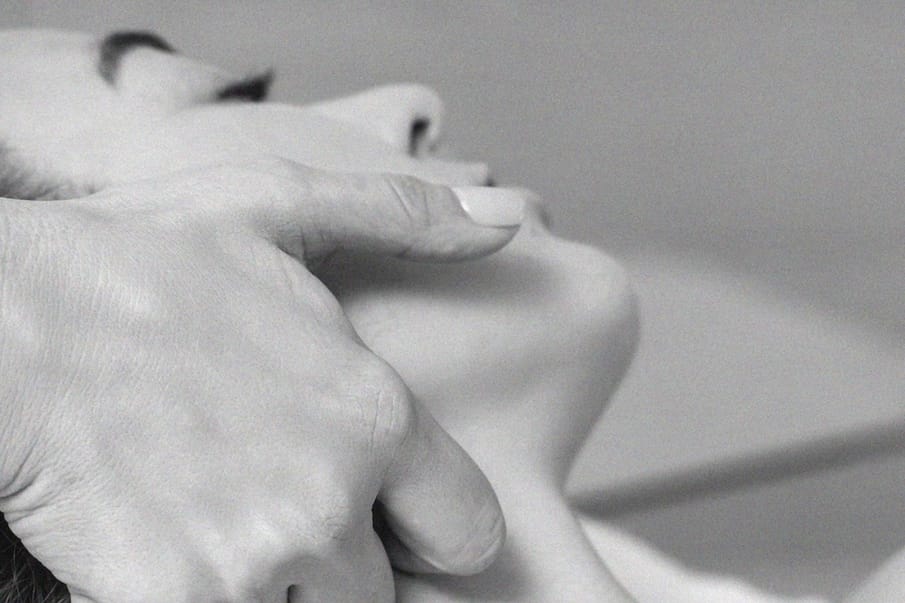It’s a treatment used by community nurses and celebrity masseuses alike, so what is lymphatic drainage and does it actually work?
Its benefits are thought to include glowing skin, debloating, eased joints, and stress reduction, and it’s heralded by celebrities and influencers, along with sometimes being used to treat conditions such as rheumatoid arthritis, fibromyalgia, and chronic venous insufficiency (when the veins in your legs don’t work effectively). So, what exactly is lymphatic drainage, why do people turn to it, and do the results live up to the hype?
Lymphatic drainage, sometimes also known as manual lymphatic drainage, is a type of massage that is used to relieve painful swelling in your body caused by lymphoedema – a build-up of lymph fluid between the skin and muscle, which can happen when the lymphatic system is not working properly.
There are two types of lymphoedema, ‘primary lymphoedema’ refers to a genetic fault that affects the development of the lymphatic systems, and ‘secondary lymphoedema’ which happens when the lymphatic system has been damaged – perhaps as a result of cancer treatment, infection, injury, or a lack of limb movement. According to the NHS, the main symptom of lymphoedema is swelling – usually in the arms and legs. Other symptoms can include:
- An aching, heavy feeling
- Difficulty with movement
- Repeated skin infections
- Developing hard, tight or thickened skin
- Folds developing in the skin
- Wart-like growths developing on the skin
- Fluid leaking through the skin
It’s important to speak to a GP if you suspect you may have lymphoedema – particularly if it may be related to a treatment that you have received. Your medical team will then work on the next steps for controlling the symptoms, which may include wearing compression garments, lifestyle adjustments, and – notably – specialised massage techniques.
A hands-on approach
Lymphatic drainage shares similarities to other forms of massage, but with some key differences. Despite what you may imagine when you read the word ‘drainage’, it’s done with a lighter touch than regular massages. The practitioner follows a specific sequence that begins with the main drains in the body – these are in the lymph nodes in the neck, groin,and armpits. The lymphatic drainage has two steps: clearing (when your tissues release the lymph fluid) and reabsorption (when your lymph fluid moves into your lymph nodes). Afterwards, you may or may not notice an immediate difference but, with time, you should begin to feel some relief.

But, this is no new treatment. In fact, it was first used by Danish doctors Emil and Estrid Vodder in the 1930s for the treatment of immune disorders. At the time, the lymphatic system was not very well understood, and yet they found that rhythmic hand movements to promote lymph movement helped patients who had swollen lymph nodes. The technique was spread across Paris and, following World War II when they could return to Copenhagen, Emil and Estrid Vodder taught other Danish practitioners these techniques, which are still referred to today. And, right now, it’s going through a bit of a boom.
In a Guardian report from earlier in the year, it was found that one Los Angeles masseuse who specialises in lymphatic drainage had a waiting list of more than 2,300 people. Driven by celebrities like Kim Kardashian, Megan Fox, and Hailey Bieber – plus hordes of influencers and bloggers – lymphatic drainage has recently grown from a primarily medicalised practice to one with big promises when it comes to body sculpting.
So, does it work?
There isn’t yet a definitive answer on whether or not lymphatic drainage works – both for the treatment of lymphoedema and for aesthetics – and studies show mixed results. In an analysis of seven systematic reviews and meta-analyses, a paper published in the British Journal of Community Nursing found that, while overall results indicated the manual lymphatic drainage might reduce lymphoedema volume, the effects were not well established enough, the efficacy was often contradictory, and it’s addition to patient’s treatment plans may not always be necessary.
While that gives an overall picture, there are cases where lymphatic drainage is more effective than others. For example, another review published in the Aesthetic Surgery Journal found that a manual lymphatic massage two to three times a week, for three to four weeks, was an effective way of supporting cosmetic surgery patients, aiding in reducing swelling and supporting their recovery. It has also become popular among athletes following sporting events, with a randomised controlled trial published in the Clinical Journal of Sports Medicine finding that athletes who received manual lymphatic drainage showed better muscle recovery. Any weight-loss claims, however, are fictitious. All that said, it has been noted that some of the success of this treatment may be down to the placebo effect, in part linked to the relaxing and generally enjoyable nature of it.
First-hand experience
In conclusion, more research is needed in order for us to have a better understanding of both the lymphatic system and lymphatic drainage treatments. But, while you should be cautious about expensive treatments that are overhyped by people who have something to gain (for example, influencers with sponsorship deals), lymphatic drainage does, in some cases, appear to make a difference for people recovering from certain illnesses. So, could this gentle, low-risk treatment work for you? You’ll have to sign up for some first-hand experience.


Comments